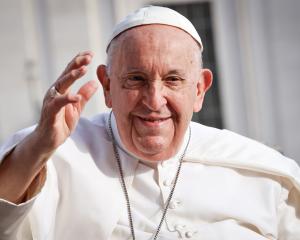
Exhausted climate negotiators from 195 nations sought ways on Thursday to strengthen a planned global agreement to combat global warming, and argued over who should pay billions of dollars to help developing nations meet those goals.
French Foreign Minister Laurent Fabius, chairing the United Nations conference, said he planned to issue a penultimate draft in the evening with as few disagreements or bracketed passages as possible, to pave the way for a last round of revisions.
Fabius has insisted that an accord to curb the greenhouse gas emissions that are accelerating global warming must be finished by Friday night, rather than overrunning into the weekend as past UN meetings have done.
Among remaining points of discord, the European Union said curbs agreed in Paris should be reviewed and tightened every five years from the early 2020s, while China balked at having to step up its own measures before 2030.
Also controversial is who should pay the hundreds of billions of dollars required to help developing countries shift from fossil fuels that produce carbon dioxide (CO2) to lower-carbon energy sources.
That point has led to tension between the United States and China. US Secretary of State John Kerry has bemoaned a "minimalist" approach by countries that could make a greater financial contribution.
For their part, the Chinese avoided discussing specific details but said they saw room for compromise.
1.5 DEGREES OR 2?
"There will be another draft today where more square brackets will be removed but, most importantly, we need more consultations with our colleagues," said Gao Feng, one of the Chinese negotiators. "On Friday or Saturday we may get there."
So far, 186 nations have laid out national plans for combating climate change until 2025 or 2030 as building blocks for a Paris accord. But many disagree over when and how they should be reviewed and updated.
European Climate and Energy Commissioner Miguel Arias Canete said national plans for action should be reviewed every five years, "so that when the treaty enters into force in 2021, we are able to raise the level of ambition".
"Without the five-year cycles, the agreement is meaningless," he told a news conference.
But Gao noted that China had set out a national plan in June to start reducing its CO2 emissions by 2030: "I cannot say that in the middle, 2025, we would be in a position to change it."
The talks have also highlighted differences on how ambitious the deal should be in trying to control the rise in the earth's surface temperature.
More than 100 developing nations want the agreement to include a long-term goal to limit the increase to 1.5 degrees Celsius (2.7 Fahrenheit) over pre-industrial levels, even though the emissions cuts that countries have pledged to make over the coming decade are far from achieving that limit.
The existing UN goal, of limiting the rise to 2.0C (3.6F), was agreed in 2010. Developed nations including the US indicated they might agree a Paris text that raised the ambition to "well below 2 degrees".
Many participants remain haunted by the calamitous failure to get a deal in Copenhagen in 2009, the last time the world tried to reach a consensus on dealing with climate change.












